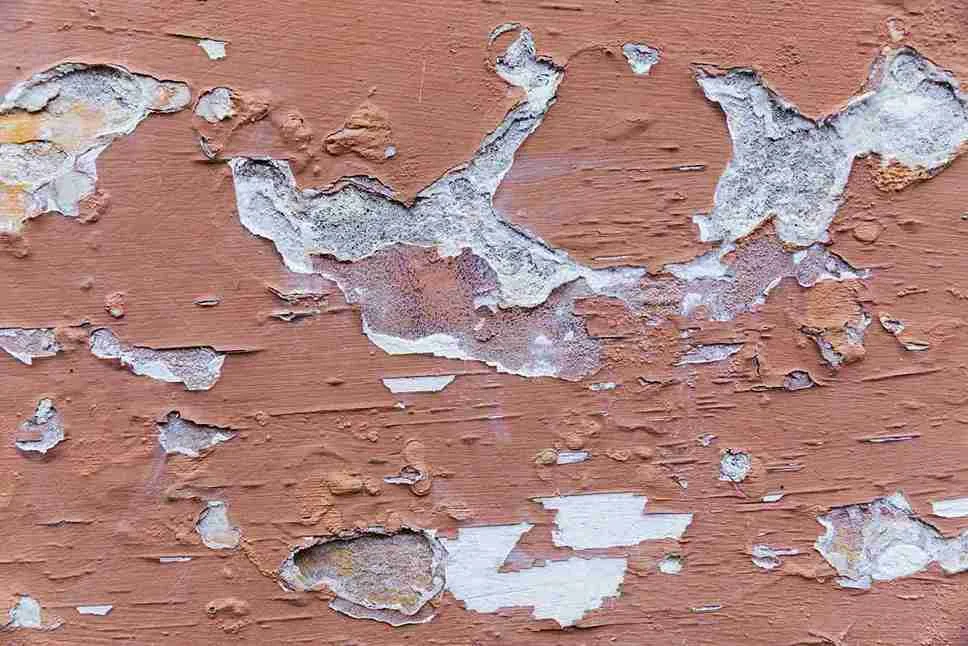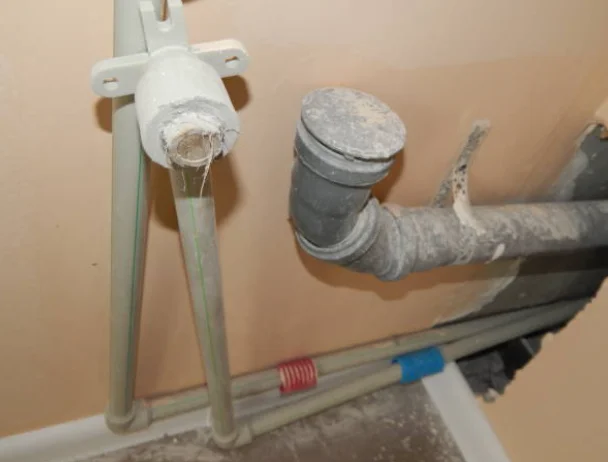Before the 1970s, lead paint was widely used in homes, dishware, and toys due to its appealing appearance, durability, and quick drying. It was a popular choice, but over time, healthcare professionals and studies revealed its harmful exposure to human health, leading to a ban on its use in residential and consumer products. However, millions of older homes still contain lead paint, posing dangerous risks as it deteriorates or gets disturbed during renovation.
The HUD Department of Housing and Urban Development’s OLHCHH findings, highlighted in the American Healthy Homes Survey II report, revealed that 34.6 million homes still have traces of lead-based paint, emphasizing the need for effective methods of identifying and addressing this lurking hazard.
If you’re renovating an old home or just concerned about potential risks to your family, knowing how to detect and handle lead paint is critical. Signs like cracking or peeling paint can signal a problem, especially in older homes. Professional testing or sampling can determine if lead is present, while reliable guides and services can help you remediate the issue.
Avoid disturbing these surfaces unnecessarily, as the spread of hazards like pesticides, formaldehyde, or mold can worsen the situation. To maintain a healthy environment, focus on identifying levels of contamination and ensuring any renovation is done safely and effectively to avoid significant problems in the future.
What is lead paint?
Lead paint, also known as lead-based paint, is a type of paint that contains lead as one of its components. Lead was commonly used as an ingredient in paint to enhance durability, speed drying, and improve resistance to moisture, particularly in homes built before the mid-20th century.
What Are the Health Risks of Lead Paint?
Lead paint poses severe risks because it often releases dust and tiny particles that can be inhaled, leading to serious and sometimes fatal consequences. When exposed to this neurotoxicity, the brain, soft tissues, and organs may suffer lasting harm. High levels of lead poisoning may result in seizures, coma, or even death. The toxic effects aren’t always easy to detect since symptoms can remain hidden until significant levels of lead have accumulated in the body.
People who seem healthy may still face dangerous symptoms such as headaches, abdominal issues, joint and muscle pain, and mood swings. Long-term exposure can lead to anemia, weakness, and kidney damage, while acute cases may show apparent signs quicker, including memory problems and issues with blood formation. These effects can negatively impact quality of life and are especially harmful to those already suffering from chronic health conditions.
Why Is Lead Paint Dangerous?
The EPA warns that lead is a harmful neurotoxin posing serious health problems. It is particularly dangerous for young children, as even elevated blood levels of lead can cause developmental, behavioral, and learning deficiencies. Lead exposure among pregnant women has been linked to an increased risk of miscarriage, low birth weight, and poor neurodevelopment.
These risks highlight how critical it is to identify and address lead exposure, as its impact on both children and women is deeply concerning. Detecting signs of lead in your environment ensures your health is safeguarded and helps prevent further deficiencies linked to lead toxicity.

How to Identify Lead Paint
Identifying lead-based paint in your home requires a reliable process. A professional EPA-certified inspector is key to conducting a proper lead inspection. These experts use advanced tools like a handheld XRF analyzer, which looks a lot like a radar gun.
This device works through X-ray fluorescence by shooting x-rays into a paint sample, analyzing the energy signatures that bounce back to determine the lead content. If the measurement exceeds 0.5 milligrams per square centimeter, the surface is confirmed to contain lead-based paint. By methodically scanning painted surfaces, lead inspectors ensure every spot is checked for safety.
Look at the Condition of the Paint
When examining your home for lead paint, one important step is to evaluate the condition of the paint. A key clue is alligatoring, where the paint forms reptilian scales, often appearing as a crack or wrinkle in the layers. Another telling symptom is chalky residue that rubs off when touched; however, detecting chalkiness can be difficult if fresh layers obscure the original paint.
Be sure to look in hidden areas, such as inside closets or along baseboards, where the original paint may still be intact. If you notice any of these signs, it’s crucial to hire a specialist to conduct a test, as these indicators suggest the paint may contain lead. By paying attention to these often-overlooked spots and areas, you can take steps to address the condition before it becomes a hazard.
Discussing the Home’s History with the Owner
Whether you’re a renter or a homeowner, it’s important to ask questions about the age and history of the home. Start by reaching out to your landlord or the previous owners of the house to identify any signs of lead-based paint. For example, if the property is older, there’s a higher chance it may have lead-based materials. Asking about any past renovations or testing can provide clarity on whether the paint in your home poses a risk.
Signs of Deteriorating Paint
Inspect stairways and doors closely to see if the paint is peeling or flaking off. High-use areas, like these, often show signs of wear and tear, which can lead to deteriorating surfaces. Lead-based paint tends to release lead dust as it breaks down, posing a serious health risk. Regular checks in areas with heavy traffic can help you stay ahead of potential problems.
Testing for Lead Paint
Identifying lead paint in your home is simpler than it seems. With a quick trip to a local hardware store or an online order, you can easily purchase lead test kits for under $20. These kits are straightforward to use; just follow the specific instructions provided.
Typically, the process involves carrying a sample of the suspected paint, which you either submerge in a liquid or test with a swab included in the kit. If you prefer professional assistance, consider hiring someone to administer EPA-approved tests, though the cost may vary based on your location.
If the test returns positive, it’s critical to handle the issue promptly. While it may not always be feasible to vacate your home, taking swift action is vital. A good step is to hire a qualified crew to replace the lead paint on interior walls. They can guide you through the process, including the timeline to complete the project, ensuring safety for everyone involved.
Steps to Take When You Find Lead Paint
Discovering lead-based paint in your home can be concerning, especially if you have children or are renovating. If testing confirms its presence, you have a few ways to deal with it. Depending on the situation, you may need to remove, encapsulate, or enclose the affected areas. For a small area, you might decide to handle it independently, but taking specific measures to stay safe is crucial.
Start by investing in protective equipment to shield yourself and others. Tape off adjoining rooms with plastic sheeting to prevent dust from spreading. Use a special HEPA vacuum, not a regular home vacuum even if it has a HEPA filter. For larger jobs, it’s better to call a licensed lead abatement contractor. These professionals have the skills and proper gear to handle the work effectively.
A specialist might choose from several methods for removal, depending on the area. These include wire brushing, wet hand scraping with a liquid remover, using a low-temperature heat gun, or wet sanding with a high-efficiency particulate air (HEPA-filtered vacuum). Each method minimizes the risk of spreading harmful lead dust, ensuring a safer process.
Encapsulation: A Practical Solution for Lead Paint
If you’ve discovered affected areas with lead paint in your home, hiring a professional contractor can be a wise choice. They can encapsulate the surface by applying a special coating that acts as a seal, ensuring safety. This process often involves brushing the coating on the paint to create a durable, watertight barrier. Encapsulation is an effective way to manage lead paint without the need for full removal, making it safer and more efficient for homeowners.
Enclosure Method
If you’re dealing with old surfaces painted with lead-based paint, one effective approach is the enclosure method. This strategy involves covering the affected surface with new materials, such as installing drywall over old walls or using vinyl cladding or aluminum cladding on windows. The idea is to completely conceal the lead-based paint, preventing exposure while maintaining a clean look.
By putting up new surfaces, you avoid the need to disturb or remove the hazardous material, which reduces the risk of spreading harmful particles. However, keep in mind that the toxic paint remains underneath the enclosure, so future removal or renovations must be handled with care. This method works well for creating a safe environment, especially when you’re looking for a practical and efficient solution to lead contamination.
Find Experts for Lead Paint
Detecting lead paint in your home is crucial because it poses serious health risks to your family, but it isn’t always obvious. For the average homeowner, the telltale signs can be challenging to identify with the naked eye, especially when no clear markings are visible.
The best approach is to contact a professional group like the Green Orchard Group, who have the experience and the right tools to properly diagnose the problem. They can efficiently remove any traces of lead paint from your home, preventing further issues or hazards it may cause. By enlisting experts, you ensure that your space is safe for everyone, giving you peace of mind.








